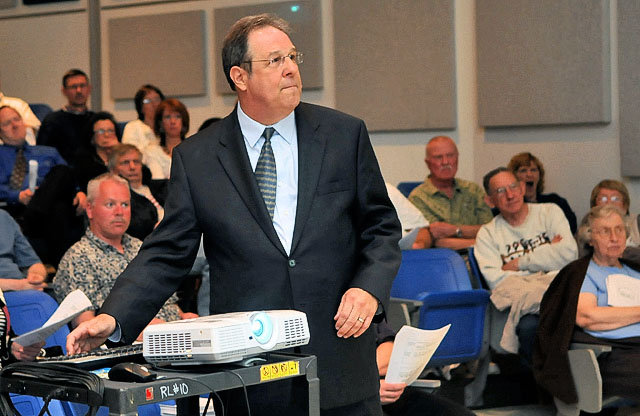A Column by Dr. Rick Timbs
Budget season is over for most of us but not everyone prevailed unfortunately.
To those of you who passed their budgets and secured the ability to buy busses and capital projects CONGRATULATIONS!
But there are school districts whose budgets failed, and/or they were unable to buy buses, particularly electric buses.
The New York State School Boards Association has reported that “voters approved 97% of school district budgets” And further, that the “passage rates for budgets within the tax cap was 99% and 60% for budgets requiring tax cap overrides.” Additionally, “statewide, 42 districts sought approval to override their property tax caps this year… Of those seeking override, 25 budgets passed and 17 failed, a 59.5% approval rate.”.
NYSBBA goes on to further state that “school districts were able to limit their tax levy increases to an average of 2.61% statewide by holding the proposed spending increases to 3.66%.” As I look at these simple statistics it creates a bit of concern for me as I look forward to the future of school district finance.
There are lessons to be gleaned from all the NYSSBA statistics noted above.
First, care should be taken to avoid the supermajority, 60% voter approval requirement because it is a heavy lift. Even if your district did not seek a super majority this year or in years past, is there one in your future?
There is no substitute for continuous long-range financial analysis and planning. All long-range analysis and planning require specifically articulated school district strengths, weaknesses, opportunities and threats to the district’s finances and educational programs. This demands tough decisions that must be made and in a timely and thoughtful fashion. Also keep in mind that things that happen in school finance and within the implementation of our educational programs can occur unexpectedly, are no one’s fault, but nonetheless force deep analysis of options and swift action.
Second, messaging by the school district must reach district residents. The analysis and implementation of a plan must be understood and embraced by district residents, so the voters are “on board” not just a recipient of the information. Even if your school district is not eyeing a potential supermajority situation, these steps are still necessary.
Third, let’s not forget that some districts are really struggling or about to start struggling financially based on critical factors of school finance. Expenses are escalating faster than revenues. The cost of health insurance, pensions, salaries, and essential programs specially designed for students with special needs are beginning to outstrip the increases in revenues of all types, including state aid.
Competition to secure teachers in key areas of our instructional programs, building administrators, business officials and superintendents has never been more visible now than in recent memory, at least to me. The complicated matter of trying to find qualified candidates for the operations and maintenance of the school buildings as well as a cadre of bus drivers to meet the needs of each school district is also identified as a statewide problem.
Fourth, there are a myriad of demographic issues in every district from declining enrollment, to increased number of students with special needs, from and aging resident populations who may be perhaps skeptical of the costs of modern school district finances and their missions, to high expectations by parents to provide all types of programs, course offerings and activities, from the family and student emotional and mental needs and other support issues, to the reasonable wherewithal of the school district to provide them.
School district complex systems of education, finance, governance, hierarchy in a largely public setting are difficult to contribute to, manage and lead. They are subject the scrutiny from multiple settings and points of view both aspirational and parochial simultaneously.
I am happy for those of you whose budgets passed, and I wish the best for those school districts that fell short in May, but let’s all reach out and support each other as the next few years could be a challenge for all of us.
On the Foundation Aid front
There were changes to Foundation aid, including a more recent census data asset, and the substitution of “economically disadvantaged” data set in the place of and exclusive Free and reduced-price lunch counts. The latter data set needs more scrutiny but appears to be a move in the right direction. There were also changes to the state sharing ratio calculations to help higher needs districts. A change to the Regional cost index, while an attempt to help Westchester County school districts does nothing for anyone else and will end up making future changes undesirable.
But most of these were the easiest improvements to accomplish. More needs to be done. Although the sparsity factor can help many rural districts, I contend it does not help enough and simple incremental changes to that formula could have been a big help. Thoughtful incremental change is all we have ever requested for Foundation Aid improvement and most recently the Rockefeller Commission. But state government truly never embraces the idea. Instead, after exhaustive efforts to get them to commit to improvements, they historically move at a snail’s pace or sometimes not at all. But I must acknowledge improvements were made.
We must renew our effort to improve the Foundation Aid formula. I’m gearing up right now. I’ve still got a big list!
Be well,
Rick





